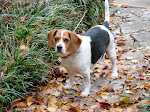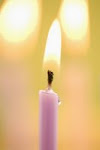 Eggs have been part of the Easter tradition for thousands of years, and the Christian tradition may have its roots in an earlier Judaic one, where eggs as a symbol of new life were a symbolic part of the Passover Seder. Numerous ancient cultures adopted the egg as part of the Easter holiday tradition. Greeks exchange red ones that symbolize the blood of Christ; Germans and Austrians green ones. Armenians decorated theirs with holy pictures, and Slavic people adorn theirs with silver and gold. The Romanovs took this a step further, adding precious metals, enamels, precious and semi-precious gems, and clocks and mechanical toys.
Eggs have been part of the Easter tradition for thousands of years, and the Christian tradition may have its roots in an earlier Judaic one, where eggs as a symbol of new life were a symbolic part of the Passover Seder. Numerous ancient cultures adopted the egg as part of the Easter holiday tradition. Greeks exchange red ones that symbolize the blood of Christ; Germans and Austrians green ones. Armenians decorated theirs with holy pictures, and Slavic people adorn theirs with silver and gold. The Romanovs took this a step further, adding precious metals, enamels, precious and semi-precious gems, and clocks and mechanical toys.As spring is a time of rebirth; it’s not surprising that animals, especially baby ones, are an easily recognized symbol of the holiday. Lambs, chicks, ducklings, and especially bunnies are the Easter ambassadors of the animal world. It is thought that the pagans worshipped the Goddess Eastre, who was symbolized by a rabbit and, like so many Christian traditions, was co-opted from earlier cultures. The Germans brought the tradition of the Easter Bunny to the new world, exchanging the bonnet in which the bunny brought colored eggs for the basket.



























